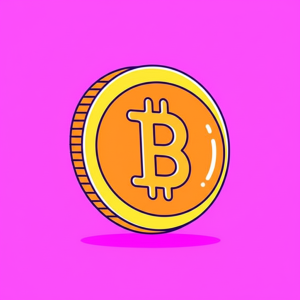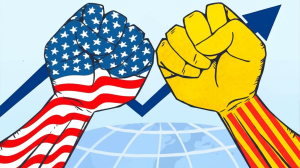
The cryptocurrency world has long been a landscape of innovation, volatility, and intense scrutiny. At the center of this dynamic ecosystem stands Changpeng Zhao, widely known as CZ, the founder and former CEO of Binance, the world’s largest cryptocurrency exchange. CZ’s influence extends far beyond Binance, shaping market sentiment and industry narratives. However, recent times have seen CZ facing heightened criticism and allegations, particularly concerning Binance’s reserves. These allegations, often fueled by speculation and fear, question the exchange’s financial stability and the security of user funds. CZ’s forceful rebuttals, frequently delivered via social media, have become a familiar sight, painting a picture of a leader fighting to protect his company’s reputation in a volatile and often unforgiving landscape.
The allegations against Binance’s reserves typically revolve around three key themes: insufficient reserves, the composition of reserves, and a lack of transparency. Critics argue that Binance does not hold enough assets to cover all user deposits, a fear amplified by comparisons to the collapse of FTX, where a shortfall in reserves played a significant role in the exchange’s downfall. Concerns are also raised about the types of assets held in Binance’s reserves, with some reports suggesting that a significant portion consists of Binance’s own tokens, such as BNB and BUSD. This raises questions about the true liquidity and stability of the reserves, as the value of these tokens is closely tied to the success of Binance itself. Additionally, some critics argue that Binance has not been transparent enough in disclosing the details of its reserves, making it difficult to verify the exchange’s solvency. These allegations, whether founded or not, strike at the heart of trust in the cryptocurrency industry. The failure of a major exchange like Binance could have catastrophic consequences for the entire ecosystem, potentially triggering a widespread loss of confidence and a market crash.
CZ has consistently and vehemently denied these allegations, employing a variety of tactics to defend Binance’s reputation. His responses can be characterized by direct confrontation, emphasis on compliance, highlighting user asset security, and data-driven rebuttals. CZ often takes to Twitter and other social media platforms to directly address specific allegations, calling out critics and accusing them of spreading “FUD” (Fear, Uncertainty, and Doubt). He frequently highlights Binance’s efforts to comply with regulatory requirements around the world, arguing that the exchange operates with the highest standards of integrity. A core tenet of CZ’s defense is emphasizing that users’ assets are safe and secure on Binance. He often points out that the exchange holds user funds in segregated accounts and employs advanced security measures to protect against hacks and theft. CZ sometimes cites data from blockchain analytics firms to refute claims about the composition of Binance’s reserves, arguing that critics are misinterpreting the data or presenting it in a misleading way. CZ’s signature phrase, “Check the history properly,” underscores his frustration with what he perceives as a lack of due diligence on the part of critics. He implies that a proper understanding of Binance’s past actions and policies would dispel many of the concerns about its reserves. However, this response can also be seen as dismissive, failing to fully address the specific concerns raised by critics.
One of the central points of contention revolves around Binance’s holdings of BUSD and BNB. Understanding the nature of these assets is crucial to evaluating the validity of the allegations. BUSD is a stablecoin issued by Paxos, a New York-regulated entity, in partnership with Binance. While Binance uses BUSD extensively on its platform, it is important to note that Paxos is responsible for maintaining the reserves backing BUSD. CZ has repeatedly emphasized this point, arguing that criticisms of BUSD reserves should be directed at Paxos, not Binance. BNB, on the other hand, is the native token of the Binance ecosystem. It is used to pay for trading fees, participate in token sales, and power various applications within the Binance Smart Chain. The value of BNB is directly tied to the success of Binance, making it a riskier asset to hold in reserves compared to more established cryptocurrencies like Bitcoin or Ether. Critics argue that a high proportion of BNB in Binance’s reserves could indicate a lack of diversification and a potential vulnerability to market fluctuations. CZ’s defense often focuses on the utility and adoption of BNB, arguing that its widespread use within the Binance ecosystem makes it a valuable asset. However, this argument does not fully address the inherent risks associated with holding a significant portion of reserves in a single, company-linked token.
The allegations against Binance’s reserves are not occurring in a vacuum. They are part of a broader trend of increased scrutiny and regulation of the cryptocurrency industry. Regulators around the world are increasingly concerned about the risks posed by crypto exchanges, including the potential for money laundering, market manipulation, and consumer harm. The collapse of FTX has further intensified these concerns, highlighting the importance of transparency, accountability, and robust risk management practices in the crypto industry. In this environment, Binance, as the largest and most influential exchange, is naturally subject to intense scrutiny. CZ’s recent guilty plea to money laundering violations and his agreement to step down as CEO of Binance further complicate the situation. While he maintains that these issues are separate from the allegations about Binance’s reserves, they inevitably raise questions about the company’s overall governance and compliance practices.
Ultimately, the long-term success of Binance, and the cryptocurrency industry as a whole, depends on building trust with users, regulators, and the general public. This requires a commitment to transparency, accountability, and sound financial management. While CZ’s forceful defenses may be effective in the short term, a more sustainable approach would involve proactively addressing the concerns raised by critics. This could include conducting regular, independent audits of Binance’s reserves to verify their accuracy and composition. Providing more detailed information about the assets held in reserves, including their market value, liquidity, and risk profile, would also enhance transparency. Diversifying the reserves by reducing the proportion of BNB and other company-linked tokens in favor of more stable and liquid assets could further bolster confidence. Engaging in open and constructive dialogue with regulators and critics, addressing their concerns in a transparent and forthcoming manner, would also be beneficial. By taking these steps, Binance can demonstrate its commitment to responsible stewardship and build a stronger foundation of trust for the future.
CZ’s legacy in the crypto world is complex and multifaceted. He is undoubtedly a visionary leader who played a key role in bringing cryptocurrency to the masses. However, his tenure at Binance has also been marked by controversy and regulatory challenges. The allegations surrounding Binance’s reserves represent a critical test for both CZ and the company he built. How these allegations are addressed will ultimately determine the future of Binance and shape the perception of the cryptocurrency industry for years to come. The path forward for Binance and the broader crypto industry hinges on a commitment to transparency, accountability, and robust financial management. By addressing the concerns raised by critics and demonstrating a commitment to responsible stewardship, Binance can rebuild trust and secure its position as a leader in the cryptocurrency ecosystem. The actions taken in response to these allegations will not only shape the future of Binance but also set a precedent for the entire cryptocurrency industry, influencing how exchanges operate and how they are perceived by users, regulators, and the general public.





